

On our first full Saturday of this trip, we ventured to the very southern border of Le Marche and visited the historic city Ascoli Piceno. We didn't know anything about the city in advance. We found a nice parking spot not far from the highway and walked towards the city center. We came out at Piazza Roma and the War Memorial / Monument to the Fallen. This statue was erected in 1927 and is called 'La Vittoria'. It depicts the Goddess Minerva, who is considered the patron of strategic war (per Wikipedia).
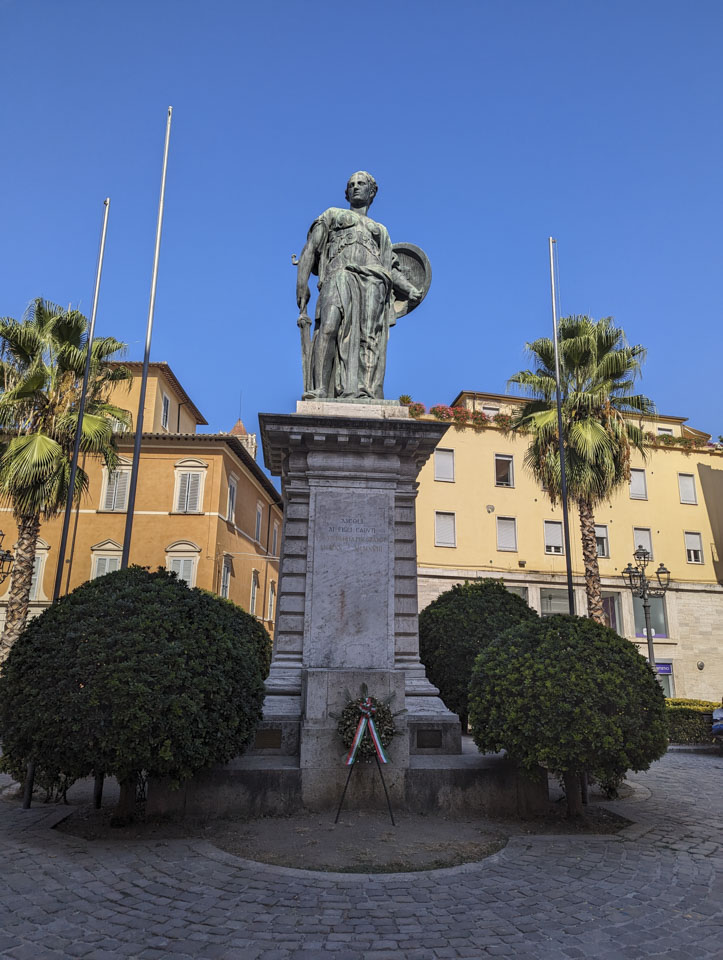
It was a busy day in Ascoli Piceno, with a market set up in the piazzas and along some of the streets. This hampered our explorations a bit (and our photographs a lot). Despite the vender booths, we could clearly see a large church down the road and went to visit it. It was the Cattedrale di Sant'Emidio. In English that is the Cathedral of Saint Emygdius. We understand why Italians call him Emidio instead; Emygdius is far too difficult to pronounce. The main floor of the church is interesting in many ways. There is a column and wall that have sections unfinished to reveal the brick work underneath. The ceiling is apparently undergoing repairs since it is covered by a cloth. There is a nice carved wooden pulpit. And perhaps most interestingly, the pews have green dots on them. These, along with the chairs set an appropriate distance from the pew, are clearly part of COVID precautions to guide parishioners on proper distancing.
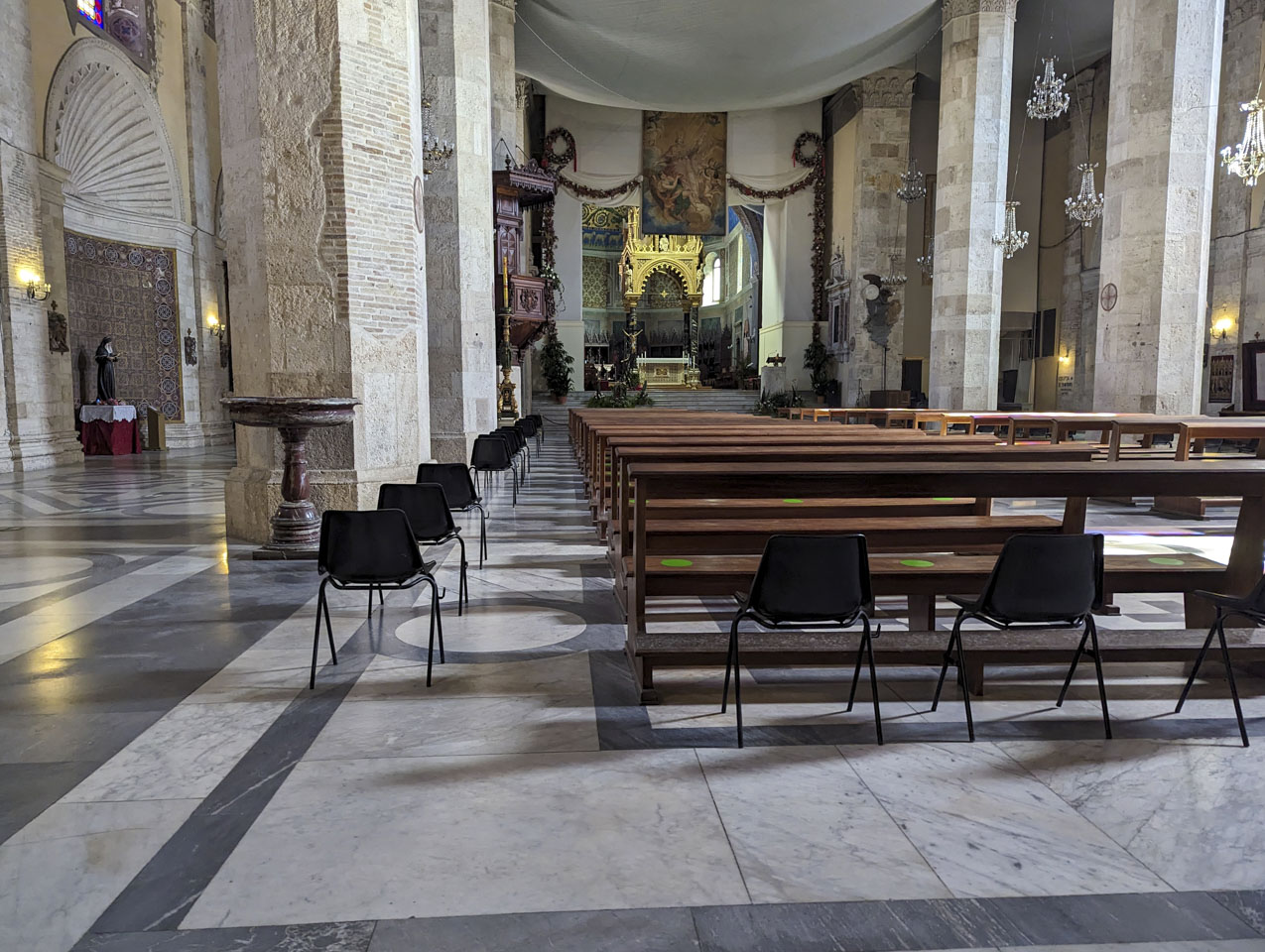
The opening at the right of the previous picture brought us down to the crypt & lower chapel area. The crypt is also undergoing some repair. We could not actually go into this area; the photo is through a gate.
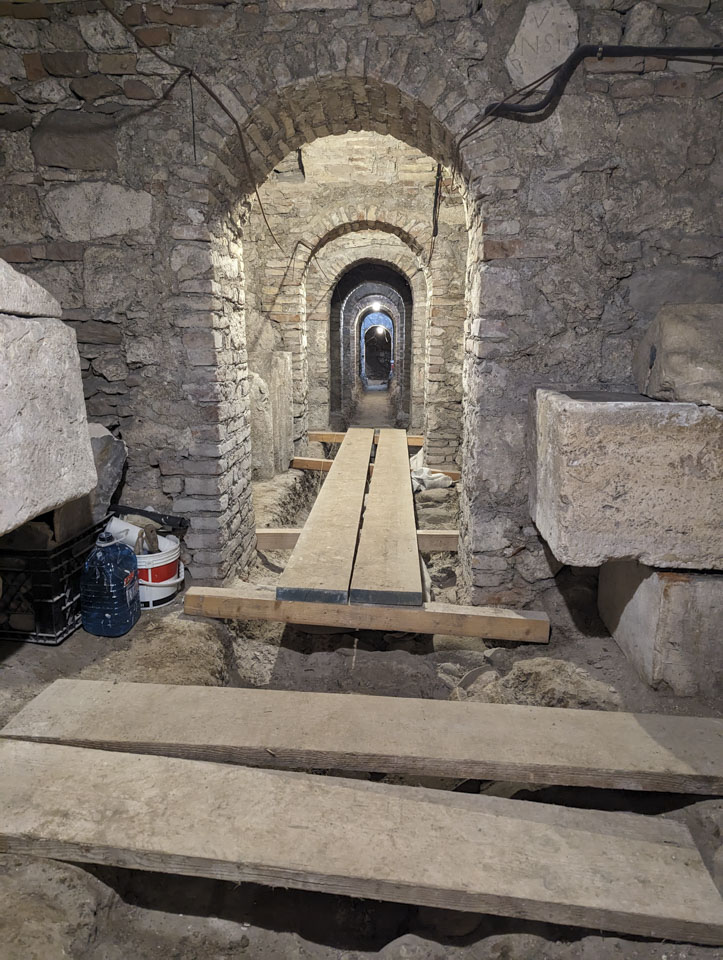
The rest of this lower level had multiple sections. The first is a less finished area with a statue not of Sant Emidio, but of San Biagio (Saint Blaise), whose story includes saving a child that was choking. This statue comes from a small church that was once near this cathedral.
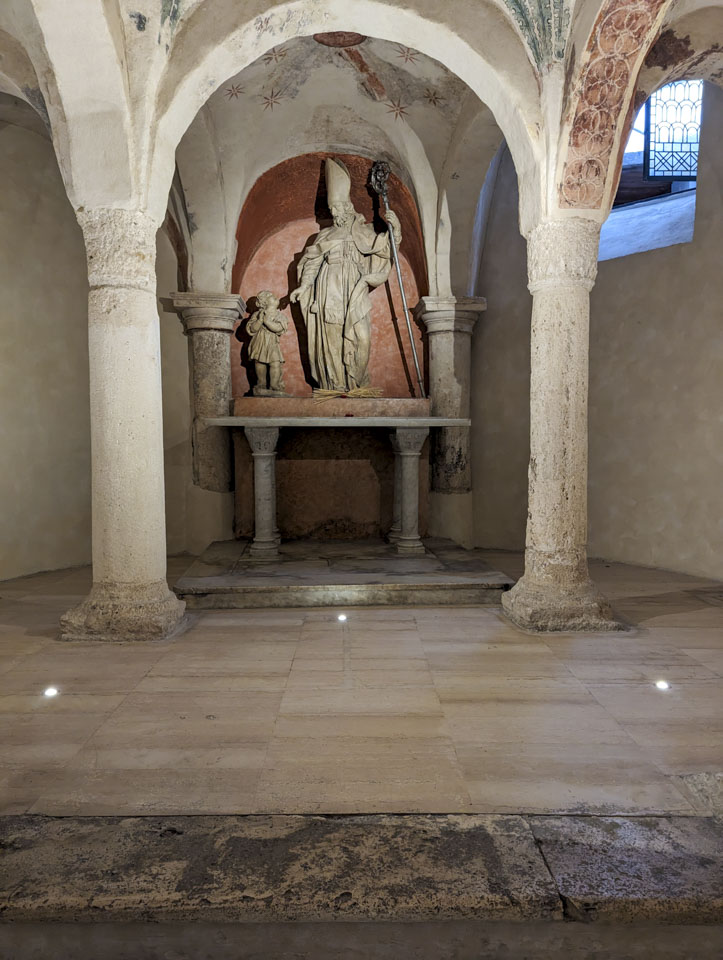
Nearby is a statue of Saint Emidio. The statue itself depicts Saint Emidio baptizing the daughter of the local governor. That local ruler later beheaded Emidio. The walls and ceiling are decorated with mosaics. The walls depict the last year of the 2nd World War, while the ceiling depicts angels protecting the city of Ascoli.
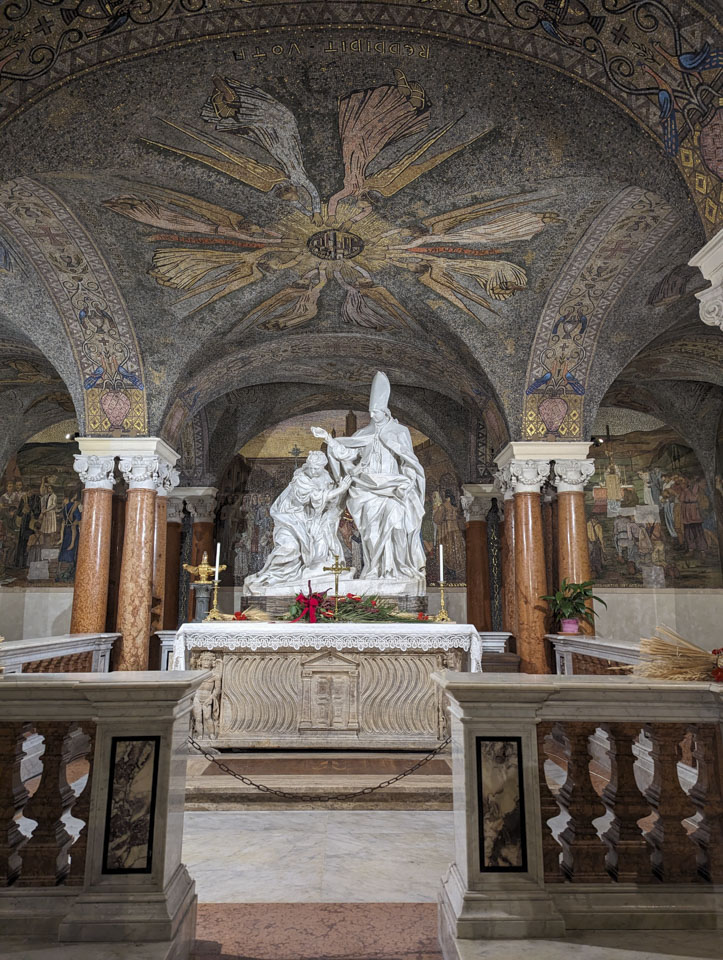
The most famous food of Ascoli Piceno are the stuffed fried olives. Unfortunately for us, they are stuffed with meat so we didn't try them. We received a restaurant recommendation, La Locandiera, for our lunch and wandered around until we found it. We both had ravioli, Anne's with a red sauce, and Paul's with a walnut sauce. Both of us enjoyed the meal a lot. This picture is definitely of the food, not of Paul (which is why he is out of focus).
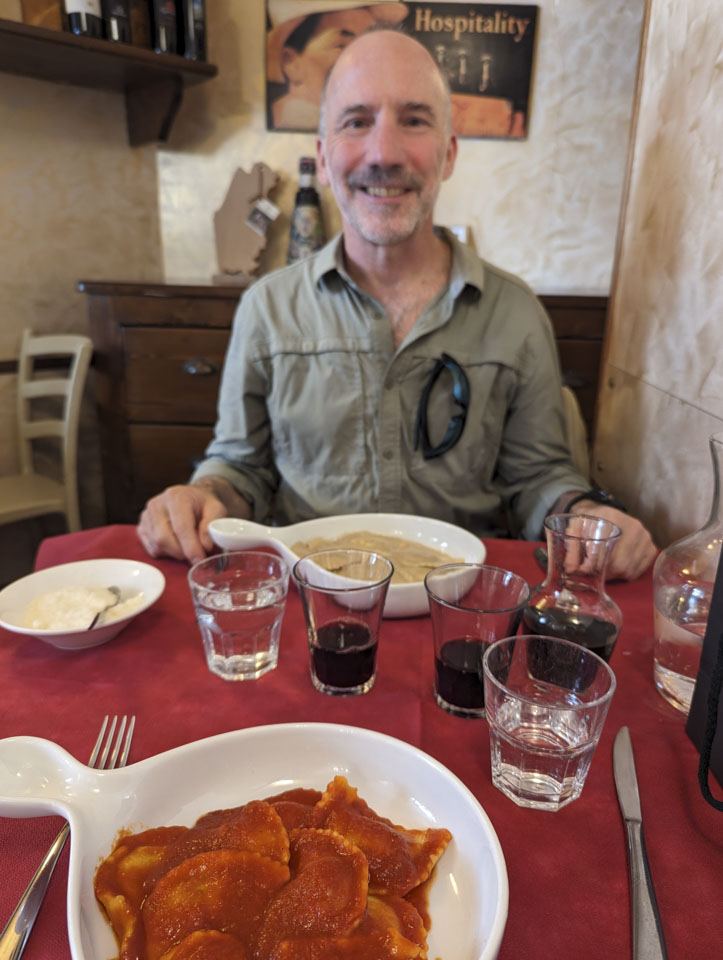
They had a few interesting decorations in the restaurant. One is a cutting board in the shape of Le Marche, this region of Italy. (Next to it is a Christmas Beer by a northern Italian brewer, Forst.) And a wall hanging of the 'famous' Last Supper with Marilyn Monroe and other stars, except instead of Hollywood in the background Ascoli Piceno is in the background.
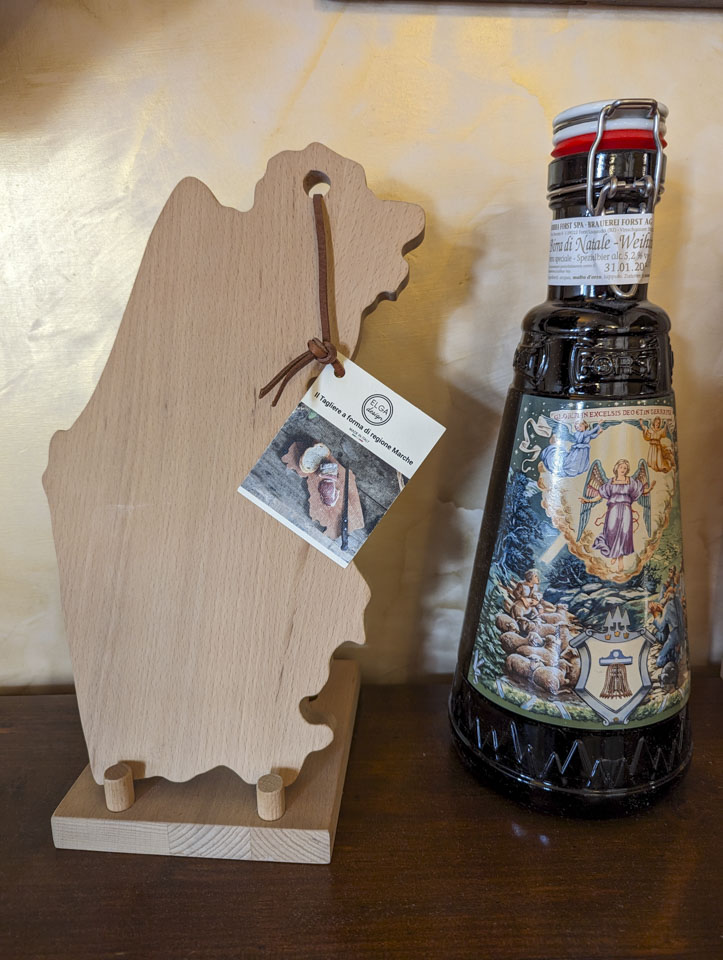
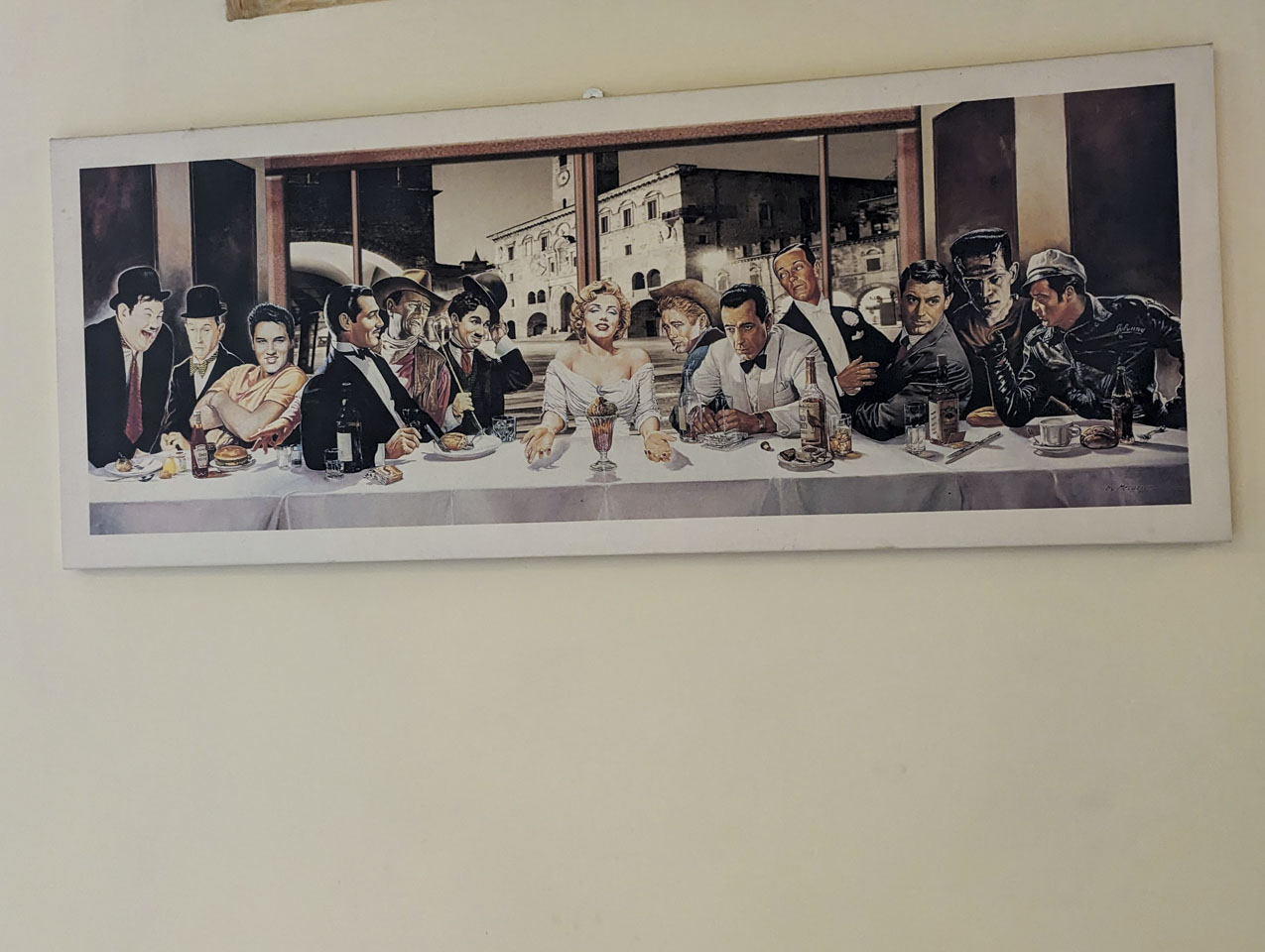
After our meal, we visited the tourist information office to get a map. The office is in the Palazzo dei Capitani del Popolo. It is on the main city square, which as is often the case is called Piazza del Popolo (plaza of the people). Most of the downtown buildings in Ascoli Piceno are made from travertine, a type of limestone, and many are made of reused blocks of travertine from previous Roman-era buildings. Those items in the foreground of this next photograph are some of the market booths. In case you are wondering, the clock on the wall was showing the correct time. (This is not the case in every city.)
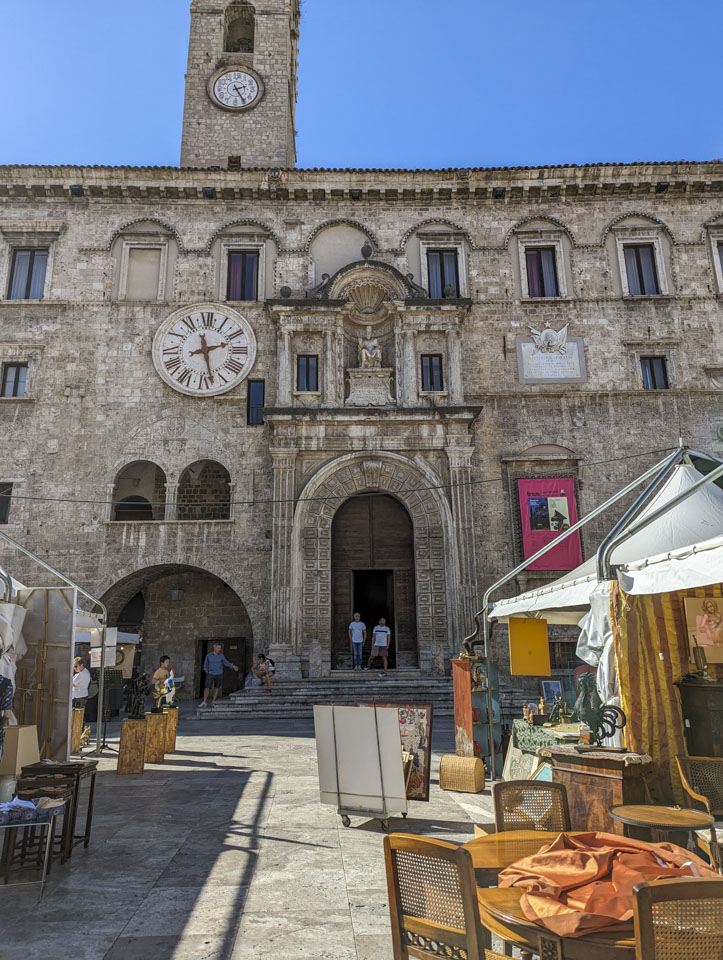
On the map was The State Archaeological Museum of Ascoli Piceno, so we made that our next stop. Conveniently, many of the signs here were in both Italian and English.
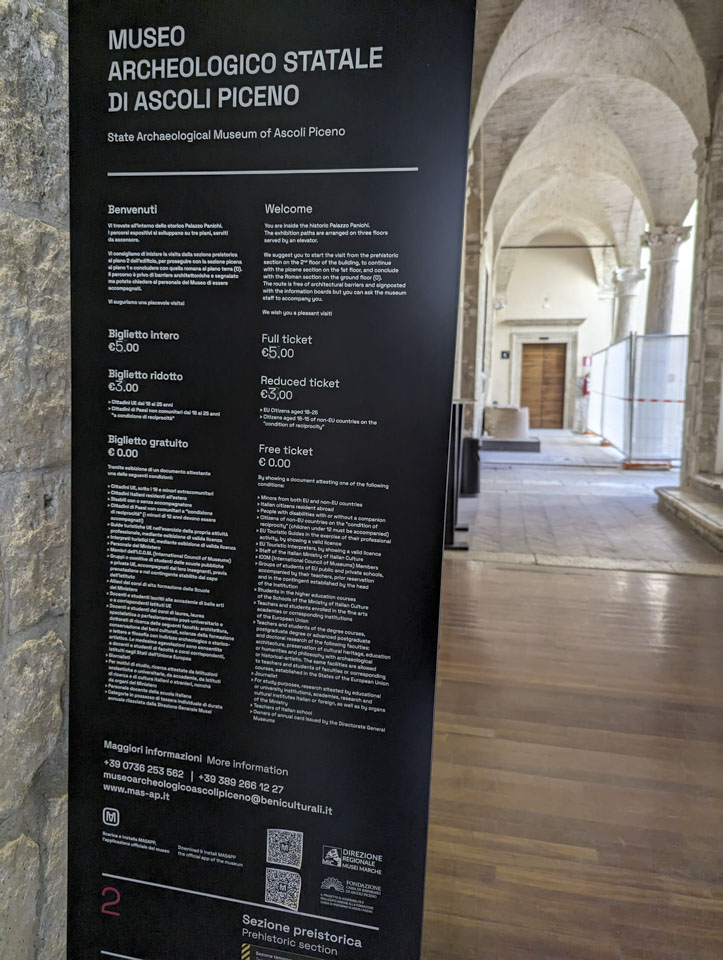
In the picture above, do you see the door at the end of the hallway? That is the bathroom. You might recall that on our page for the Monastero di Fonte Avellana was a picture of the bathroom stall with a quaint pullcord to flush the toilet. This bathroom also had a pullcord. Having just used the bathroom at the monastery the day before, Paul thought it was fairly obvious that he should pull the cord here ... except that this toilet used a push-button to flush. The pullcord was the emergency alert cord. We are happy to report that the museum staff responded promptly to the alert, and if there had been a problem we would have had help. You really have to pay attention to the toilet flushing mechanisms; they are extremely varied.
This area was once held by the Piceni people. These people held this area for centuries (9th though the early 2nd BCE) prior to the Romans coming. In fact, there was an expression that translates roughly as "When Ascoli was already Ascoli, Rome was only sheep and grass." There is much that is not known about their culture and customs. These 'pettorale', or pectoral breastplates, were common starting in the 7th century BCE.
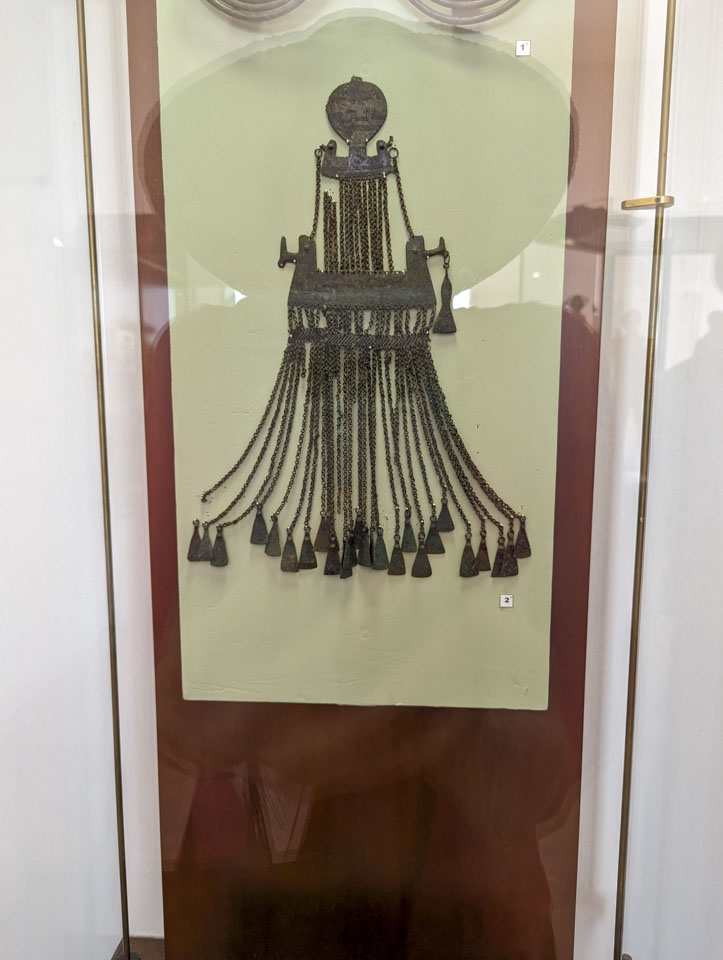
While it seems rather recent after looking at Piceno artifacts, the museum also has a section on Roman history in the area (a mere 2000 or so years ago). The building that houses the museum is actually a Roman archeological dig as well as being a museum. The ground floor of the museum has a section being excavated that includes a large mosaic on the floor and some of the Roman-era building walls.
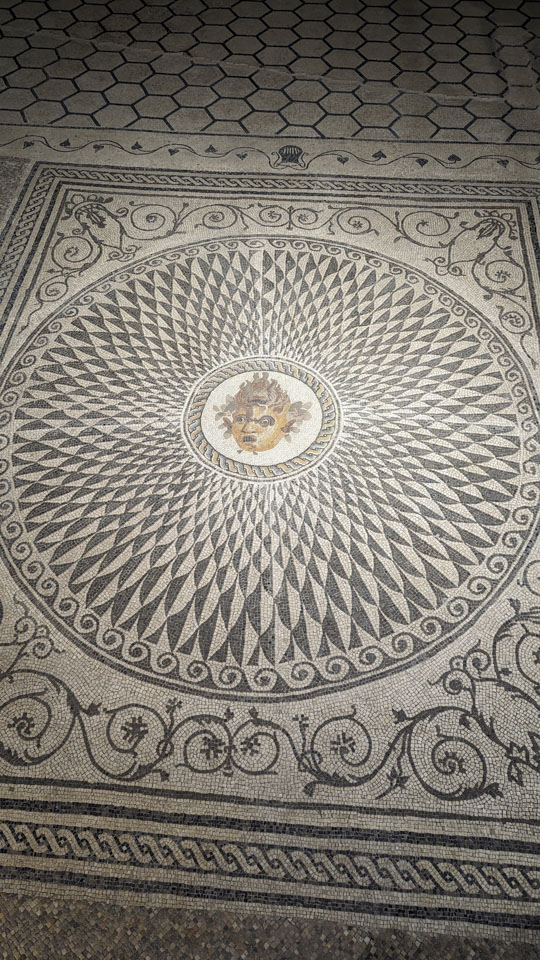
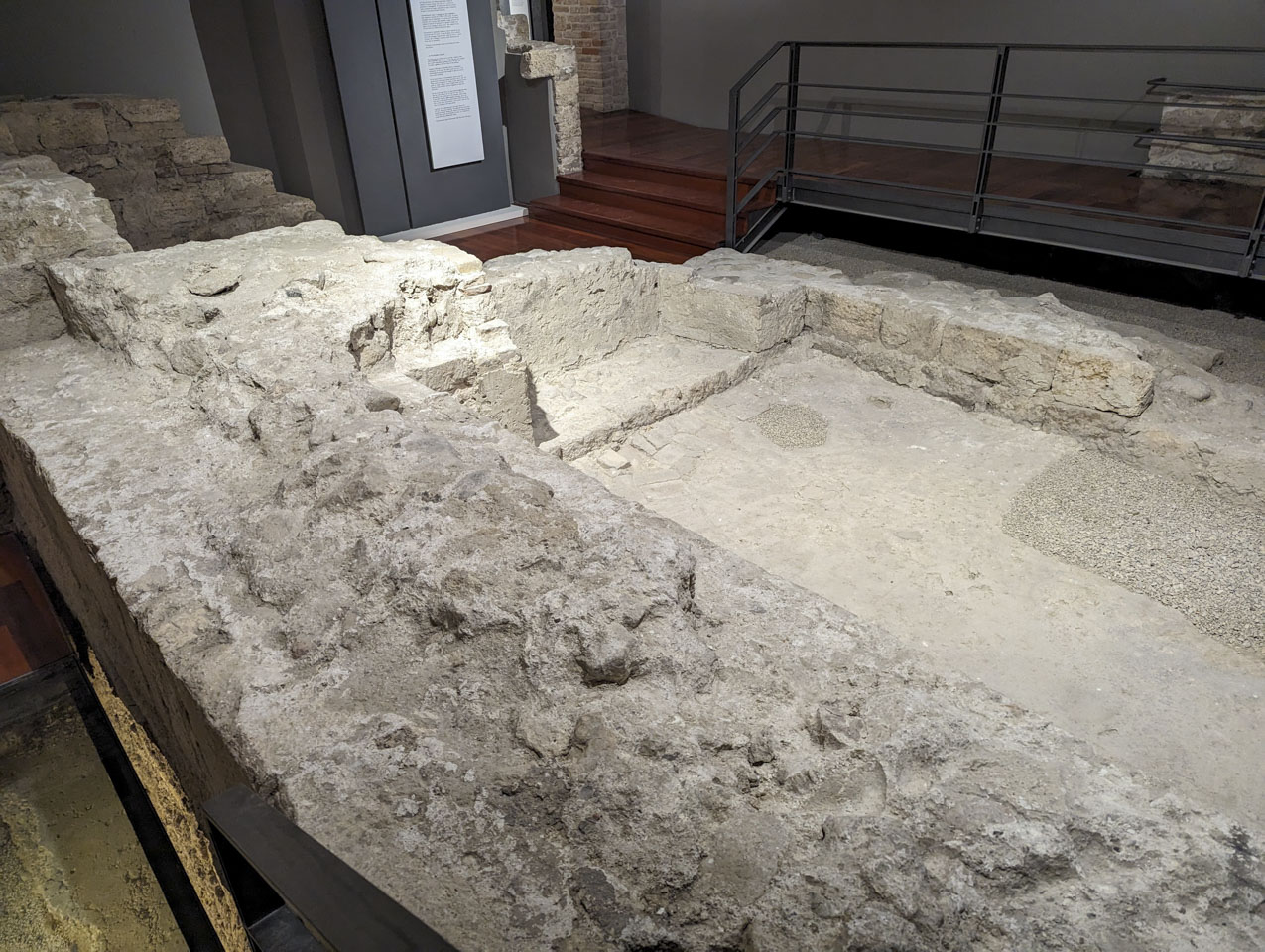
Continuing on the Roman era theme, we walked do the edge of the city center to see the Roman Ampitheater. It has the classic Ampitheater shape. Ascoli Piceno is actively working on some of its historic sites. While at the time of our visit much of the ampitheater was covered by soil, they are excavating areas to make the structure more visible.
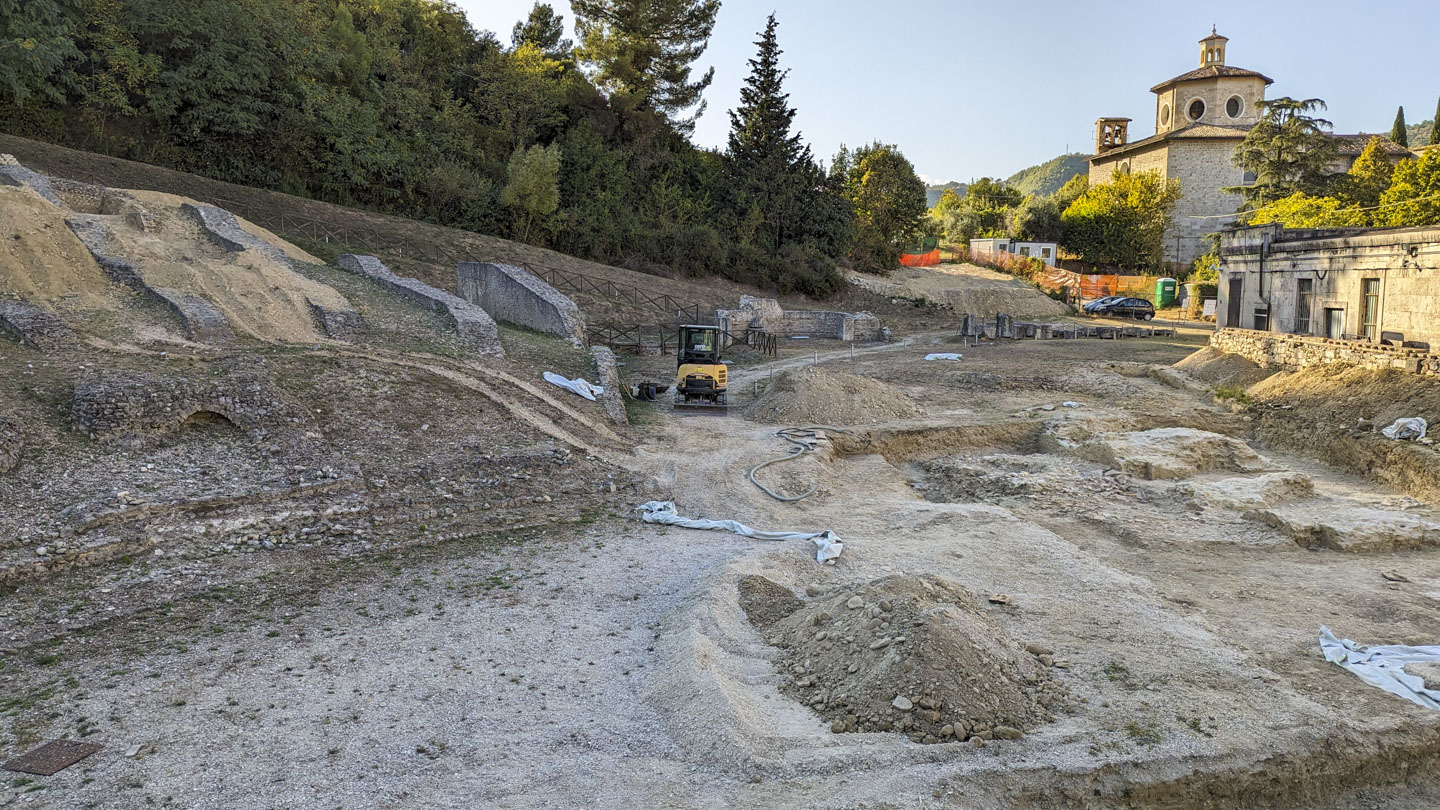
Nearby are some other sites that are clustered together. One is a Roman wash house, reached by descending a ramp from road level. The location is linked to Saint Emidio, with the story either that the water sprung forth when he struck the rock to obtain water for baptisms, or that it sprung forth where his decapitated head fell. This also seems to be in the process of being updated, because pictures we see on-line to not match what we saw in October 2023. It typically has basins under to portico, which have been removed. And the arches have new brickwork.
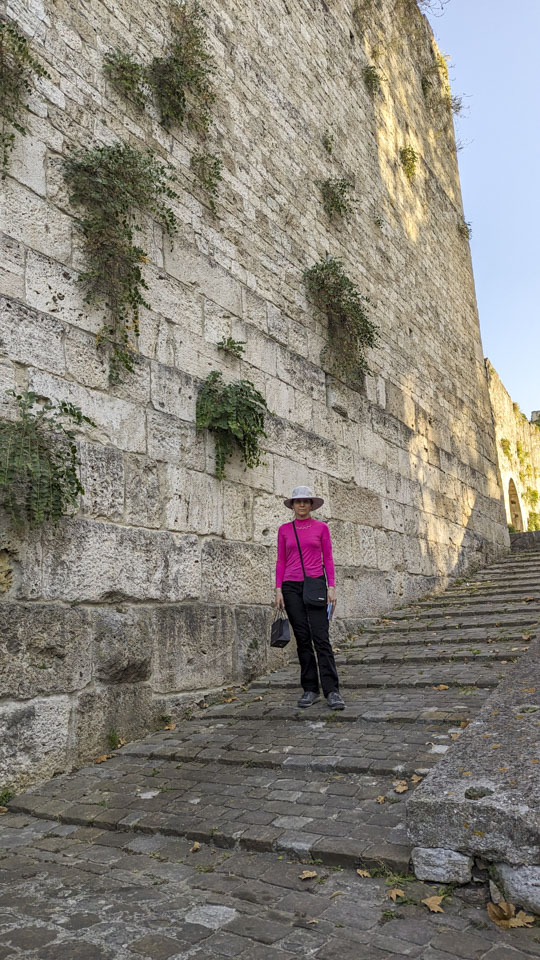
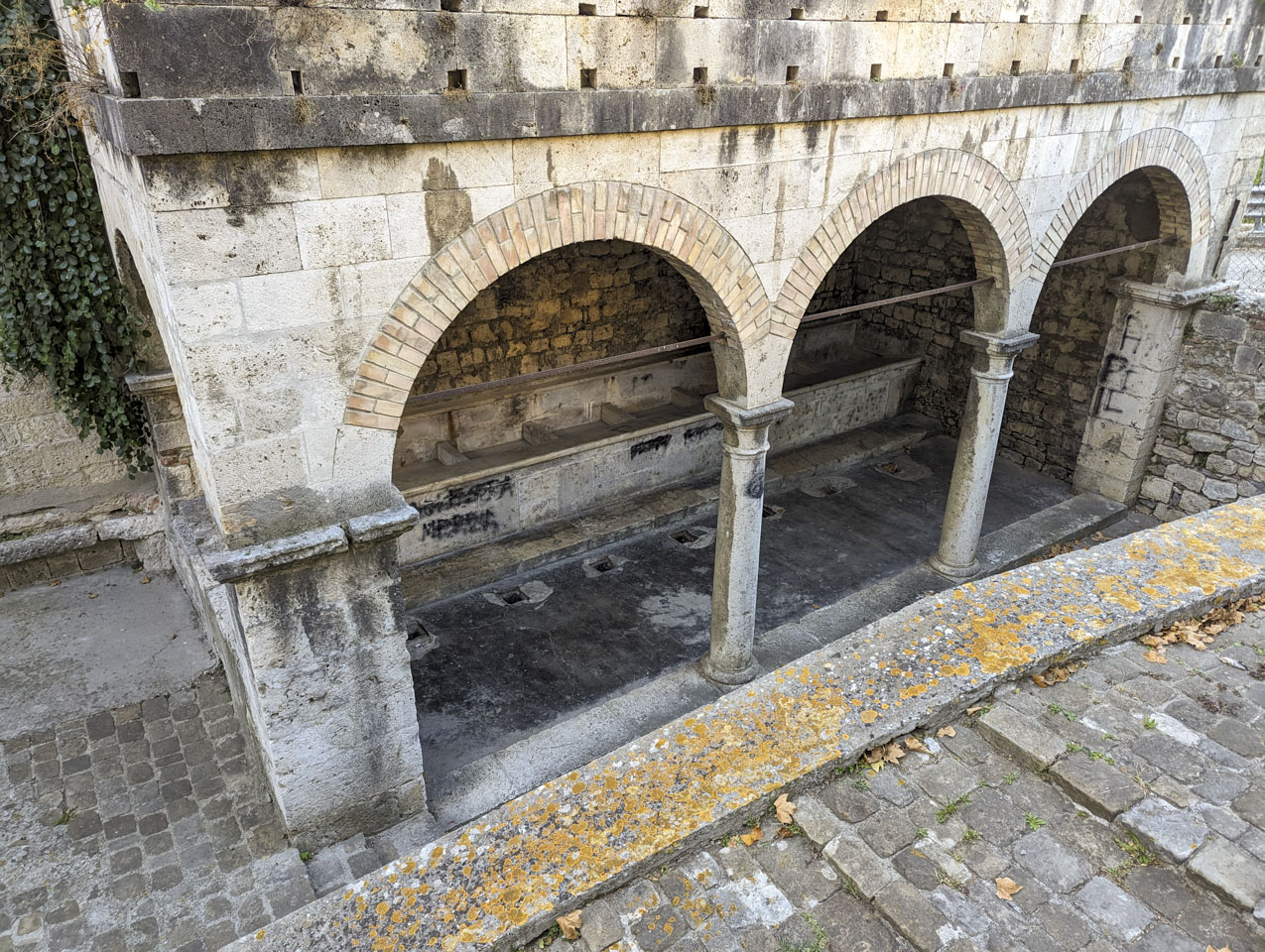
We unfortunately did not take a picture of this, but the top surface of the washhouse appears to be the patio of a residence. When your entire city is an ancient artifact, living among them is simply what you do. Across the street is a wall from the Middle Ages, and if you look closely you can see a car parked next to the round bastion. Just a normal parking spot, next to an ancient wall.
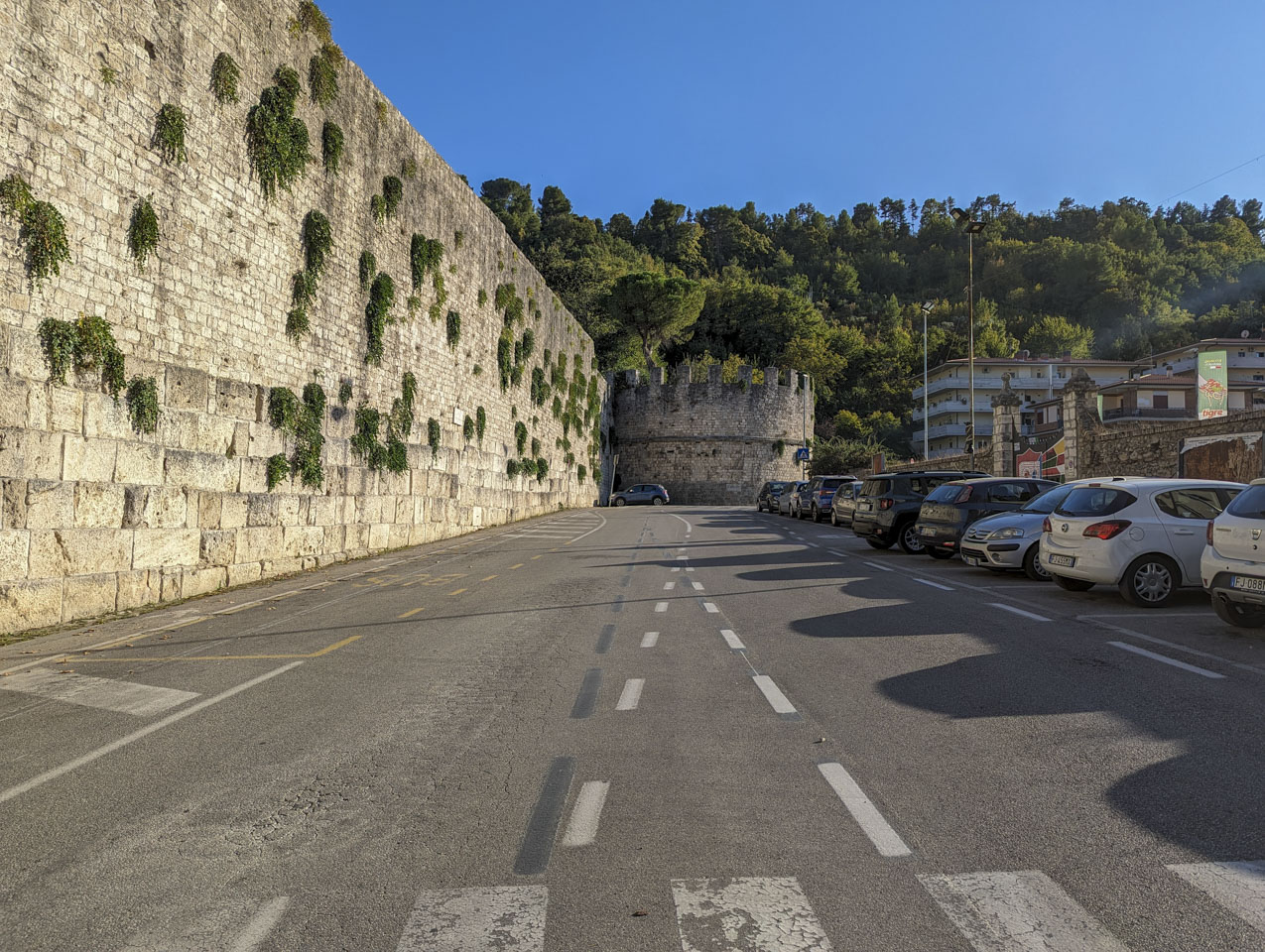
Looking back towards the Roman washhouse there is what a sign identified as a pre-Roman wall, traceable back to the mid 4th century BCE.
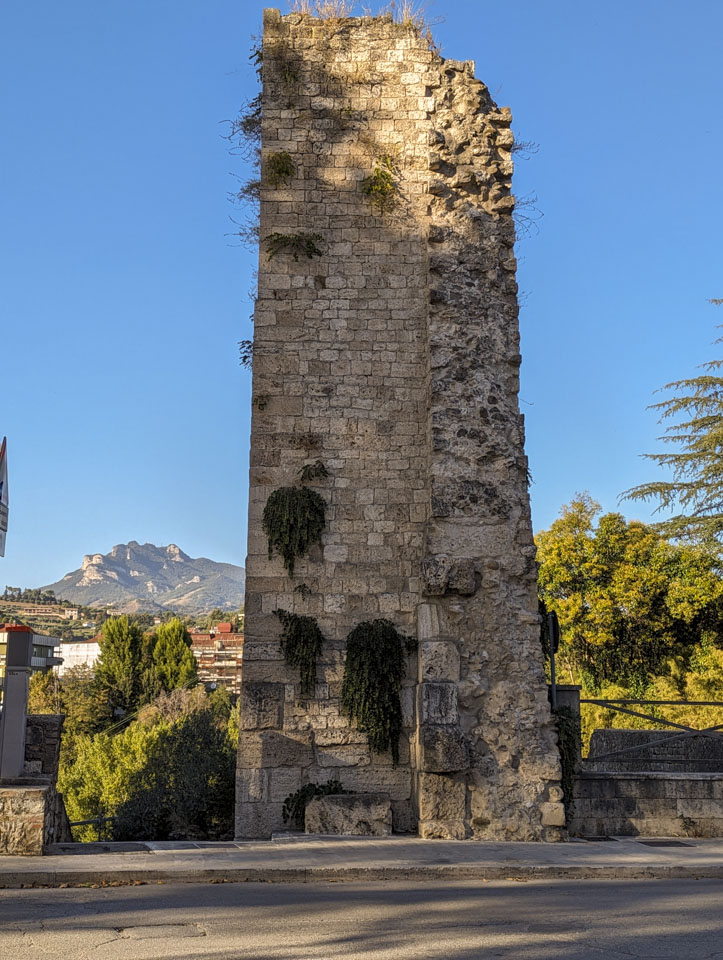
Across the street is a Roman era wall called Porta Gemina because it has a double entrance. The wall on the right of this next picture is the pre-Roman era one featured in the photo above.
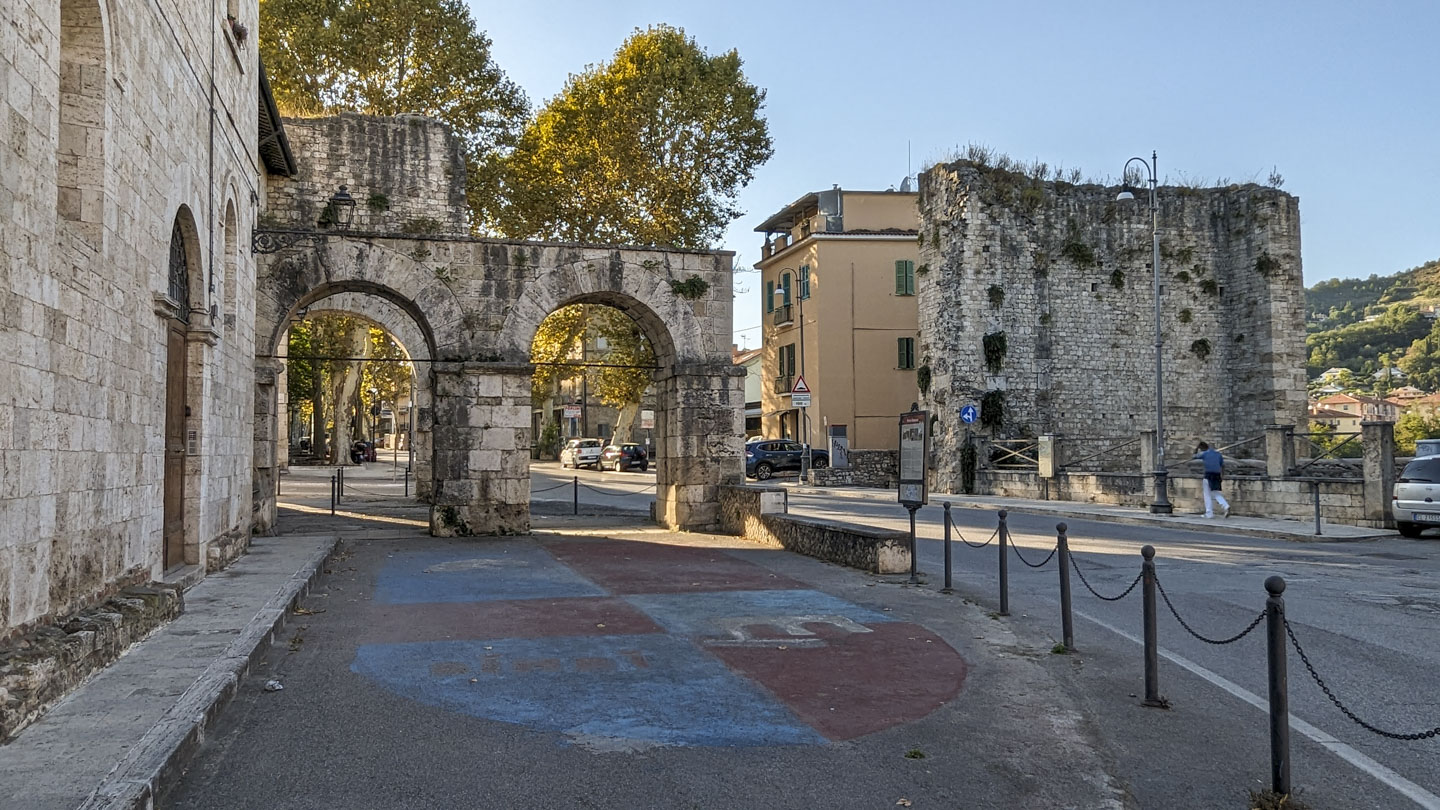
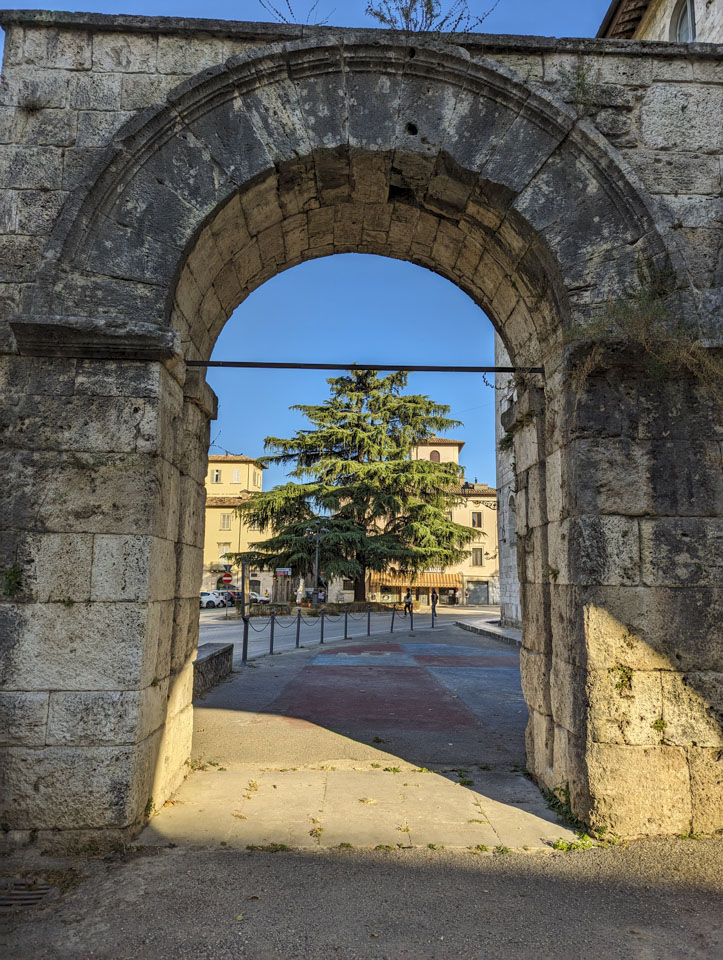
Anne had been searching for Ciocolata Calda without a lot of success. Classic Italian hot chocolate is very different than American hot chocolate: it is not as sweet and it is thicker. The unassuming bar we went into had a good ciocolata calda, one of the 2 best of the trip!
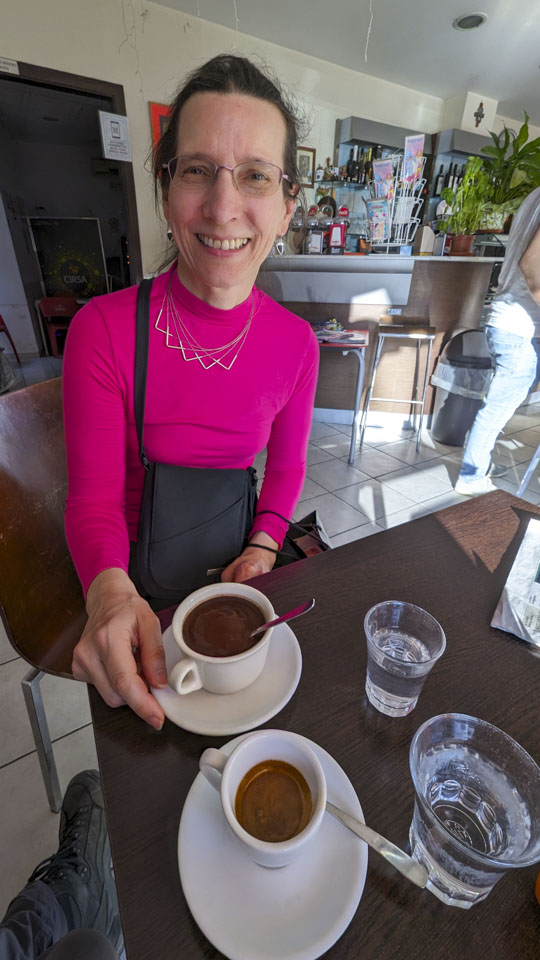
Our walk back to the car was either around the hill or over the hill. We choose over the hill. Our path went up these steps ...
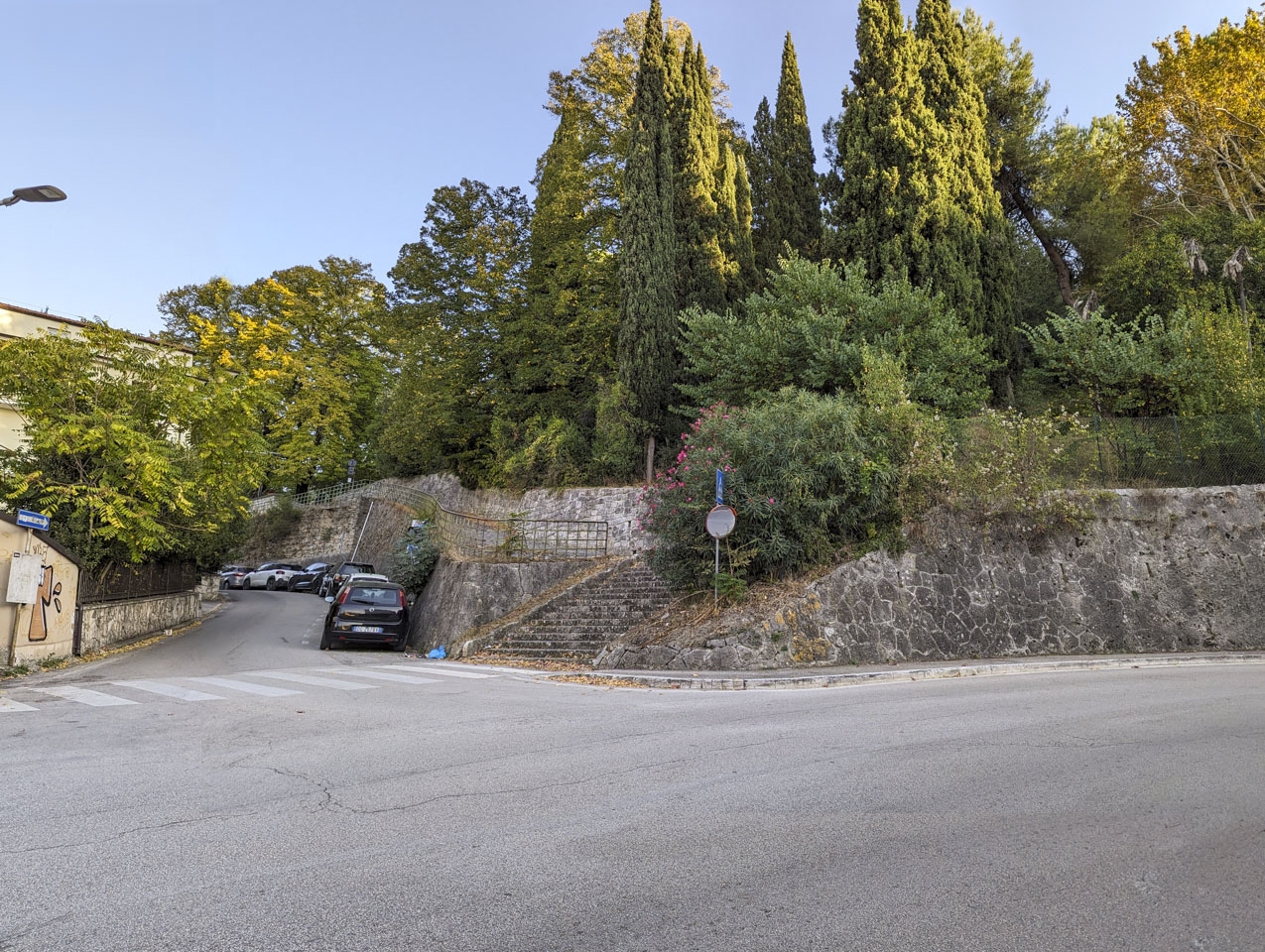
... and then up these steps. And other steps. There were even benches available if you wanted or needed to rest.
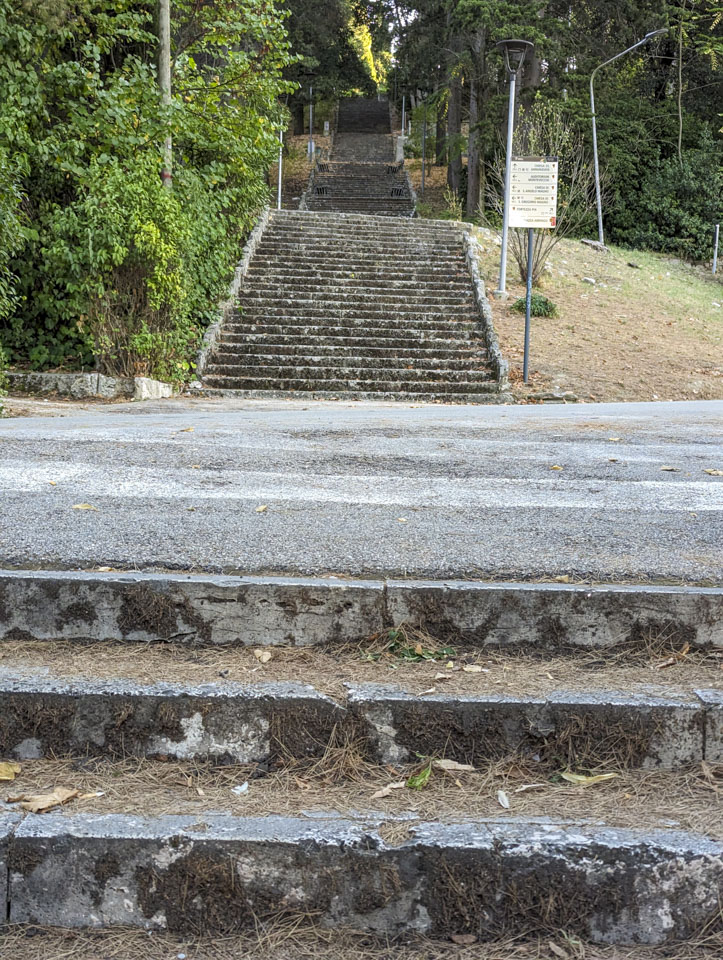
At the top is a church and an architectural school.
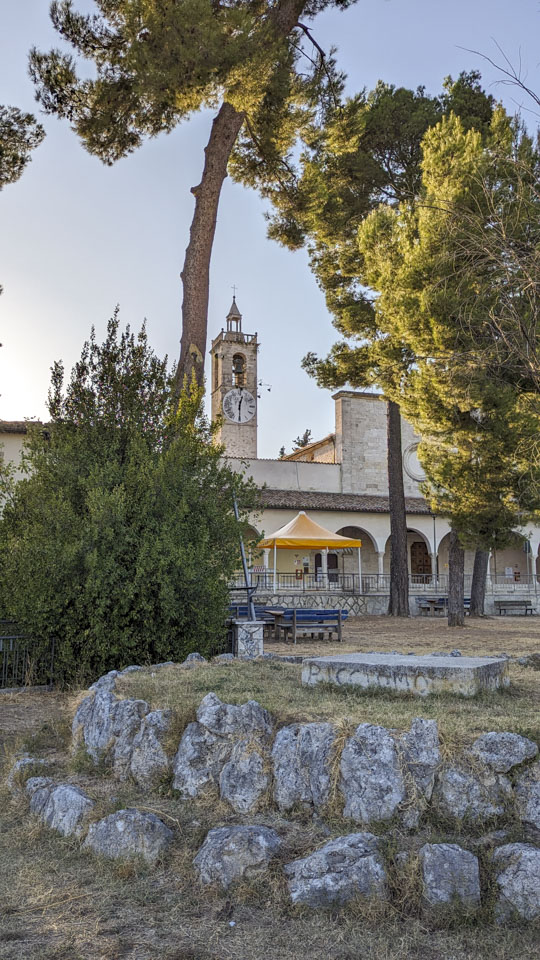
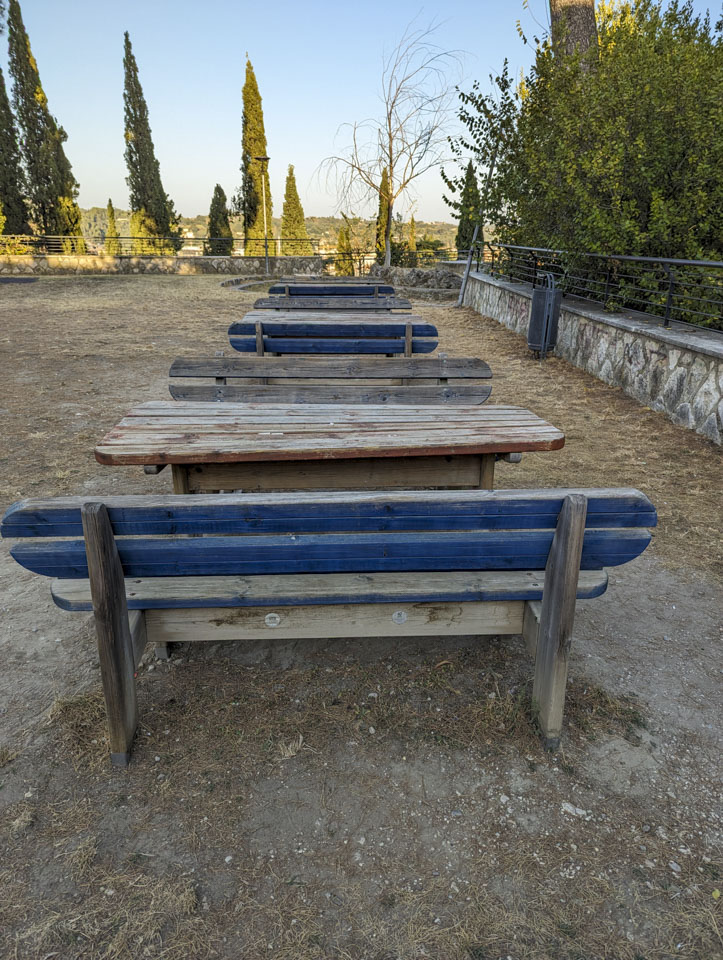
Our rental is parked on the other side of these buildings. The highway can be seen past that. On the other side of the highway is Abruzzo, the region of Italy just south of Le Marche. We did not have enough time to visit there.
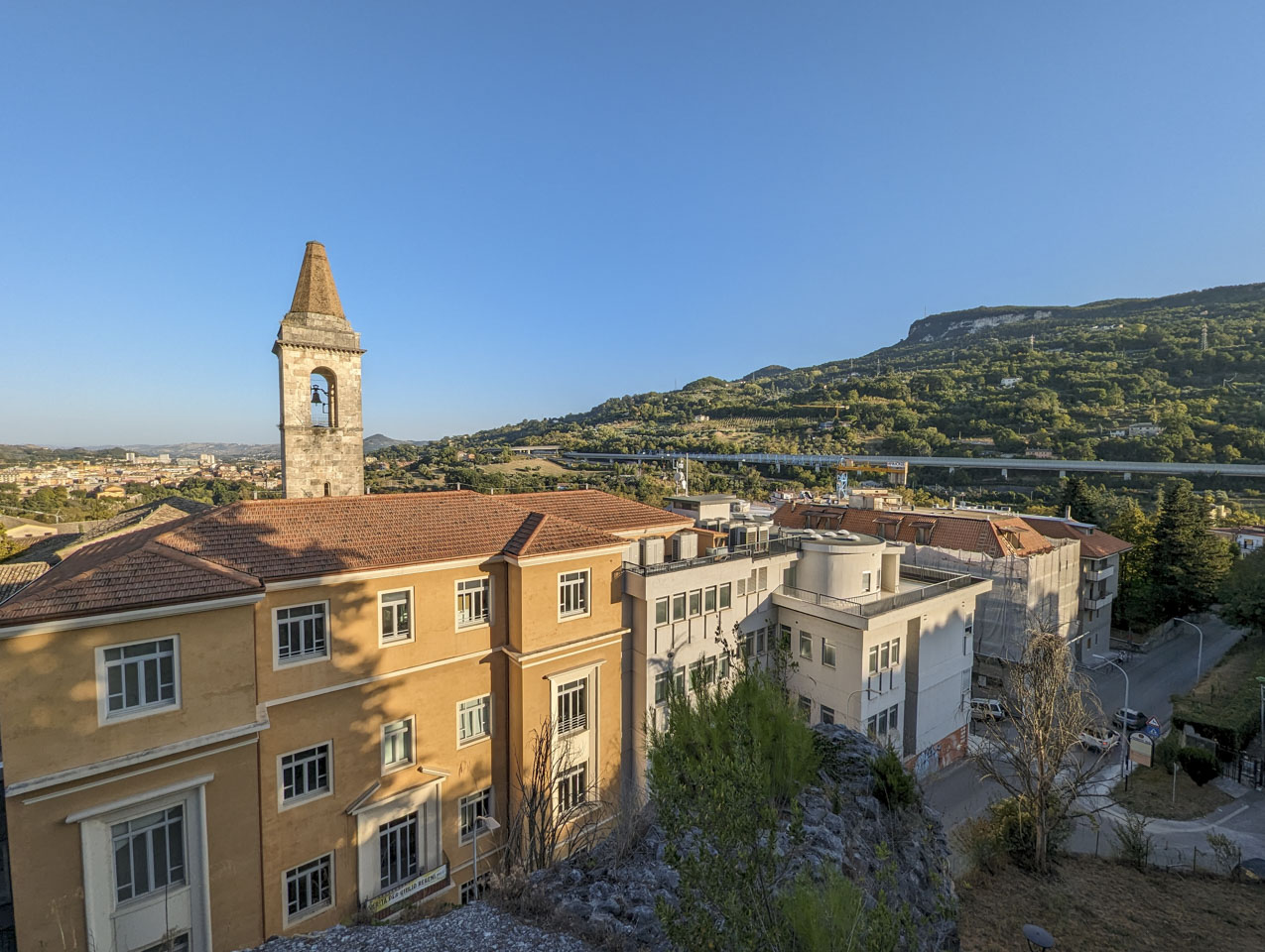
Updated January 2024